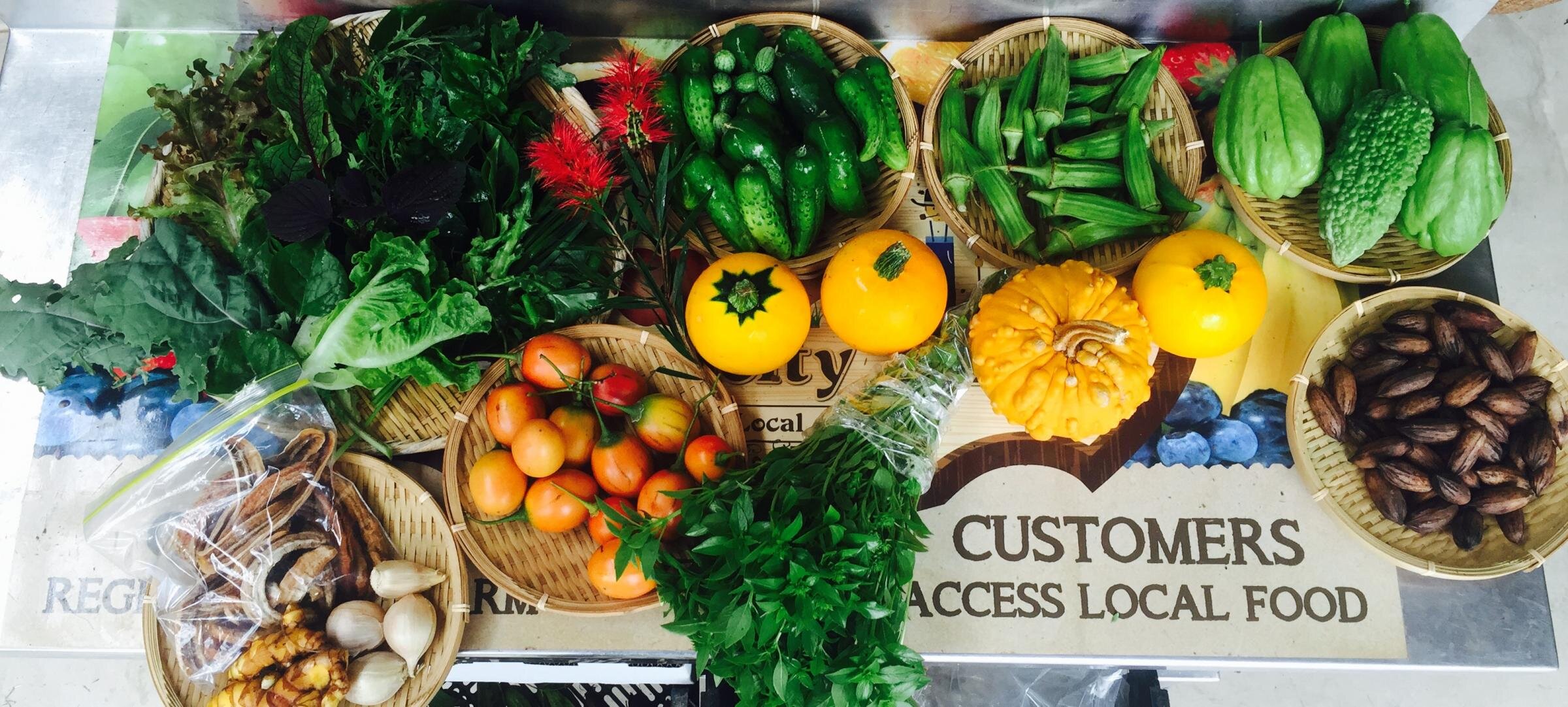
Part Five:
Common Ground
What can Cuba teach the world about preserving its soil?
Around the world, soil is drying and blowing away. Or, deluged in heavy rain, it’s washing into the nearest river. Even in some places where soil remains, it’s dying from the inside, as the bacteria, insects, and worms that inhabit it, breaking down minerals and making them edible to the benefit of all land based plant and animal life disappear.
It’s easy to dismiss this global destruction as an unfortunate environmental mishap. And yet, from China, to Brazil, to the United States, the ways we grow food are causing this destruction. Simply put, we need to apply new methods of growing food.
As impossible as it might seem to reform the system, it has been done before. With the collapse of the Soviet Union in the early 1990s, Cuba was cut off from the world market for fertilizers, oil, and agrochemicals. Food production collapsed, along with living standards: walking more and eating less, Cubans lost an average of eleven pounds.
But with the urgency only a crisis can inspire, Cuban scientists and farmers began working to solve the problem. They produced “biopesticides”—adding insects instead of herbicides to kill weeds, and mass-produced earthworms to build soil to replace chemical fertilizer, and turning the nation’s agriculture into an extractive industry intended to grow sugarcane for export into one that could grow food for itself. In 2007, Cuba produced more food than it did in 1988, but with a quarter of the fertilizers and agrochemicals. Cane production fell, but vegetable production increased 145 percent. Food imports declined, but, on a calorie basis, the Cuban diet expanded.
How did Cuba do it? Key innovations were essential, but to spread them across the country, the communist government had to turn agroecological farming into a business. As it unrolled the new agricultural model, the government retained some communist qualities: it let farmers use land for free and subsidized the new biopesticides and organic fertilizers, bringing costs down. But for the first time in decades, farmers were allowed to sell their goods for cash and keep what they earned. In a country with few opportunities, the low cost and high rewards of the new system meant a person could become relatively rich growing food for the local market. Compared to the mode of farming adapted to the commodities market which feeds the world today—where farmers survive by growing one crop at a time, maximizing its yield, and selling it to a distant market—a system where farmers make a living growing sustainably may be the most radical change of all.
If we leave the economics of it aside, it’s actually easy to map out how we might restore the world’s soil. In a 2014 paper, the ecologist Vaclav Smil described what the food system of the future might look like. Instead of monocropping corn and soy, farmers should add “forage crops”, like grasses, into the commodity mix. In erosion-prone areas, these plants should be grown but not harvested, but elsewhere, these plants could be rotated with other crops. Some, like alfalfa and clover, add nitrogen to soil, reducing the need for chemical fertilizers like urea. Inedible to humans, they are perfect feed for cows and pigs. A world with less corn and soy would have substantially less meat to eat, he wrote, but it would still have more than enough to be healthy.
But if some of the solutions are easy, why aren’t they part of our system already?
In one of the pioneering books on the soil problem, a slim volume first published in 1985 called The Political Economy of Soil Erosion in Developing Countries, geographer Piers Blaikie outlined the problem and offered some suggestions. The destruction of soil, he wrote, was the result of an agricultural system which favored surplus production. Just to survive, farmers and ranchers have to grow as much as they can. Their production benefits a global market with many actors, but when intensive production leads to soil erosion, they have to deal with its restoration on their own, even though they often can’t afford to.
To change, Blaikie wrote, farmers, ranchers, and the companies they work with first have to recognize soil erosion as a mutual problem, and share the cost of fixing it. Second, conservation experts, need to bring their knowledge of how to grow food without laying waste to soil into the field. Finally, he wrote, the entire system needs “collective discipline” to enforce policies of soil conservation at every step of the agricultural chain.
“If all these conditions are met,” Blaikie wrote, “then conservation has a good chance of success.”
NICOLAE SISIAN, A CORN FARMER FROM MOLDOVA. PHOTO COURTESY OF CATALINA BOTEA.
The “collective discipline” part is the hardest to imagine. How do you get every person and institution in the agricultural chain—from the world’s farmers to the companies they sell to—, to work toward the same goal? Yet in many countries, they already do. In the United States, subsidies for corn and soy have compelled generations of farmers to grow nothing but these crops, and as much of them as they can, on every acre of their property. It’s a system which has produced an abundance of these commodities to sell all over the world. But it’s literally paying farmers to grow as much of a single crop as they can at the expense of their soil. What if we paid farmers not to erode their soil, but to restore it, not to produce as much of a single crop as they possibly can, whatever the ecological cost, but to add value to their land?
To do this, we need a global solution. When soybeans harvested in Brazil feed pigs in China, or grapes picked in Chile sell in grocery stores in the United States, it is hard to argue that the destruction of the world’s soil is a problem for farmers’ alone, or one confined to one nation’s boundaries over another.
Let’s put it this way. We can keep producing food for a commodity market, maximizing yields at the cost of the world’s soil, and expanding into new land when the soil runs out. Or we can try something else. The choice is not just up to farmers or governments. It’s up to us all.
Matt Nightingale contributed reporting
Did you miss a part of the series?
From the Ground Up
Though we don’t think about it, soil is a finite resource—a living ecosystem that’s way more complex, important and fragile than you think.
Where the Grass is Greener
A global soy boom has turned Brazil's grasslands into a farm. Now the farm is under threat.
Holding Ground
What does it take to raise beef on the edge of American agriculture?
The Ecology of Knowledge
How do farmers learn to be soil stewards? We asked some from all over the world
See our latest & greatest, along with more updates from around the web on agriculture & #SoilHealth. Follow us on Facebook and Twitter.

